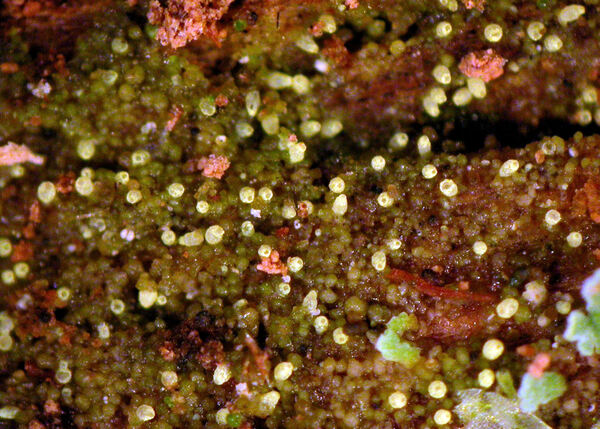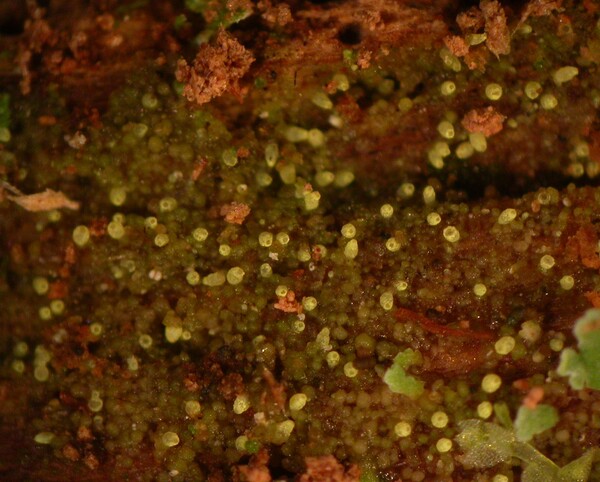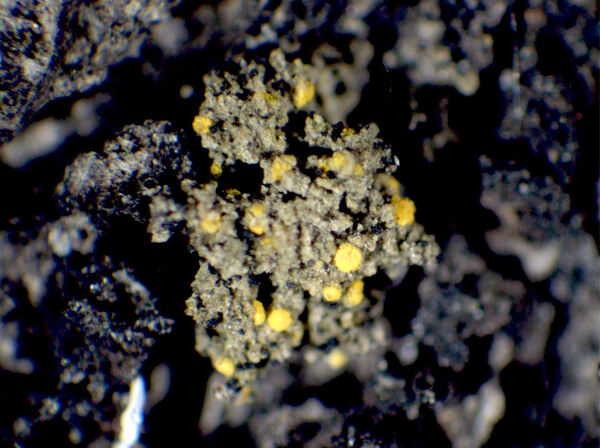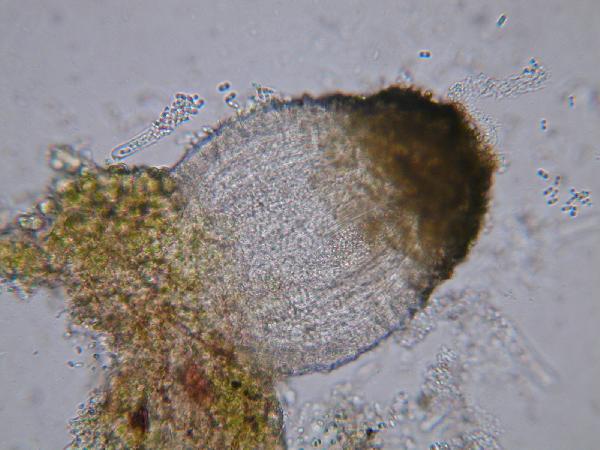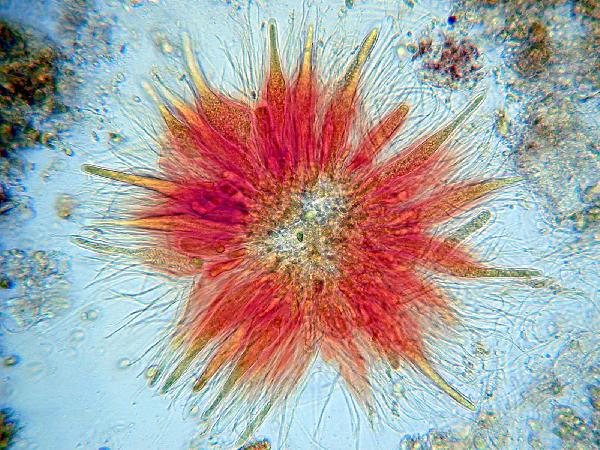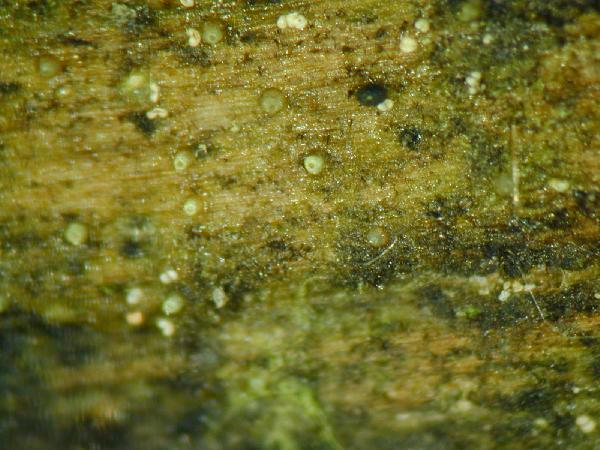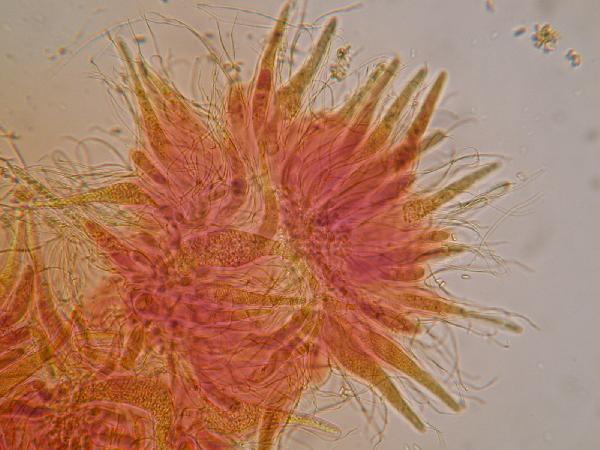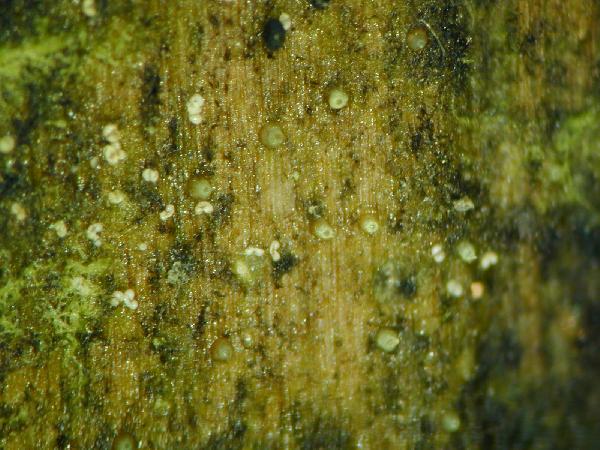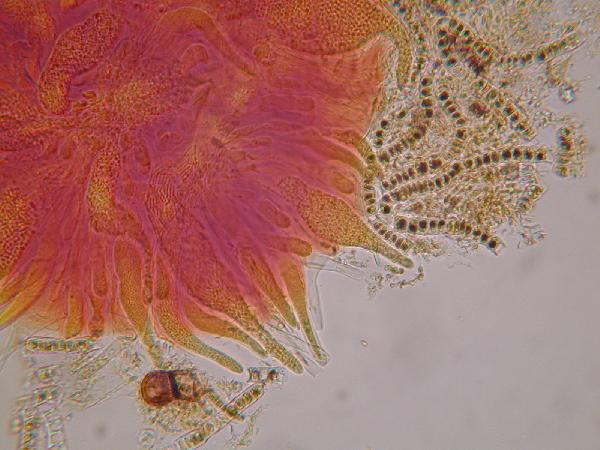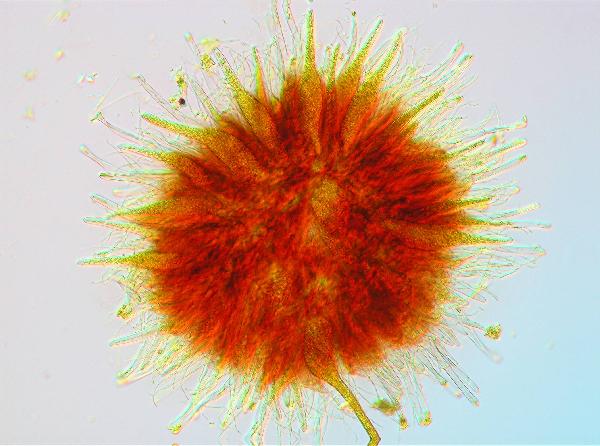Thelocarpon epibolum Nyl. var. epibolum
Not. Sällsk. Fauna Fl. Fenn. Förh., 5: 188, 1866.
Synonyms: Thelocarpon conoidellum Nyl.
Distribution: N - Frl (TSB 14678, Brackel 2016), Ven (Lazzarin 2000, Brackel 2016), TAA (Brackel 2016, Nascimbene & al. 2022). S - Cal (CLU 16653).
Description: Thallus not lichenized, mostly reduced to small, 0.1-0.16 mm wide and up to 0.2 mm tall, scattered, conical to globose, bright yellow-pruinose fruiting warts. Ascocarps frequent, perithecioid, immersed in the warts, with a concave, not exposed disc (the warts opening though a small pore). Exciple 15-30 μm thick, colourless, without algae; hymenial gel hemiamyloid, I+ reddish, K/I+ blue; paraphyses simple, slender, not apically thickened, as long as the asci, not forming an epithecium. Asci many-spored, flask-shaped, tapering to apex, persistent, narrowed to apex, the wall I-, the apex sometimes (in young asci only) with a thin I+ blue structure. Ascospores 1-celled, hyaline, oblong-obtuse, thin-walled, 4-7 x 1.7-2(-2.5) μm. Pycnidia rare, flask-shaped, immersed in partly yellow-pruinose warts, with a colourless wall. Conidia oblong-obtuse, simple to 2-septate. Photobiont absent (some green algae may be present at the base of the fruiting warts). Spot tests: K-, C-, KC-, P-. Chemistry: yellow pruina with pulvinic acid derivatives.Note: an ephemeral species found on rotting wood, decaying bryophytes, peaty soil, often also on crustose lichens (e.g. Baeomyces, Lichenomphalia, Trapelipsis) mostly in upland areas; overlooked, and certainly more widespread in the Alps.
Growth form: Lichenicolous fungus
Substrata: lignum, soil, terricolous mosses, and plant debris
Reproductive strategy: mainly sexual
paras
Commonnes-rarity: (info)
Alpine belt: very rare
Subalpine belt: rare
Oromediterranean belt: absent
Montane belt: very rare
Submediterranean belt: absent
Padanian area: absent
Humid submediterranean belt: absent
Humid mediterranean belt: absent
Dry mediterranean belt: absent

Predictive model
Herbarium samples


Juri Nascimbene – CC BY-SA 4.0; Owner: Department of ùLife Sciences, University of Trieste
Calaita, Italy
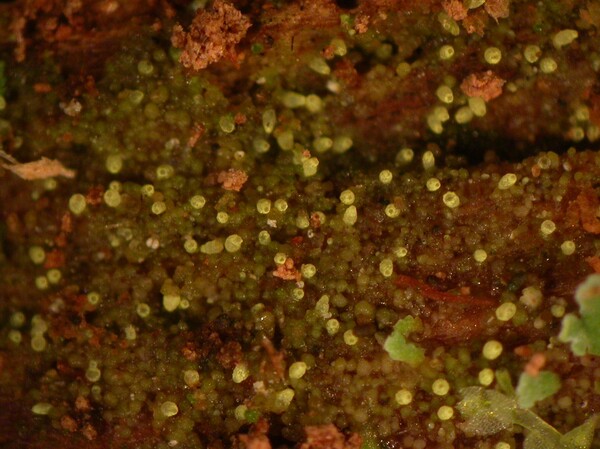

Juri Nascimbene – CC BY-SA 4.0; Owner: Department of ùLife Sciences, University of Trieste
Calaita, Italy
Growth form: Lichenicolous fungus
Substrata: lignum, soil, terricolous mosses, and plant debris
Reproductive strategy: mainly sexual
paras
Commonnes-rarity: (info)
Alpine belt: very rare
Subalpine belt: rare
Oromediterranean belt: absent
Montane belt: very rare
Submediterranean belt: absent
Padanian area: absent
Humid submediterranean belt: absent
Humid mediterranean belt: absent
Dry mediterranean belt: absent

Predictive model
| Herbarium samples |


Juri Nascimbene – CC BY-SA 4.0; Owner: Department of ùLife Sciences, University of Trieste
Calaita, Italy


 INDEX FUNGORUM
INDEX FUNGORUM
 GBIF
GBIF
 DOLICHENS
DOLICHENS
